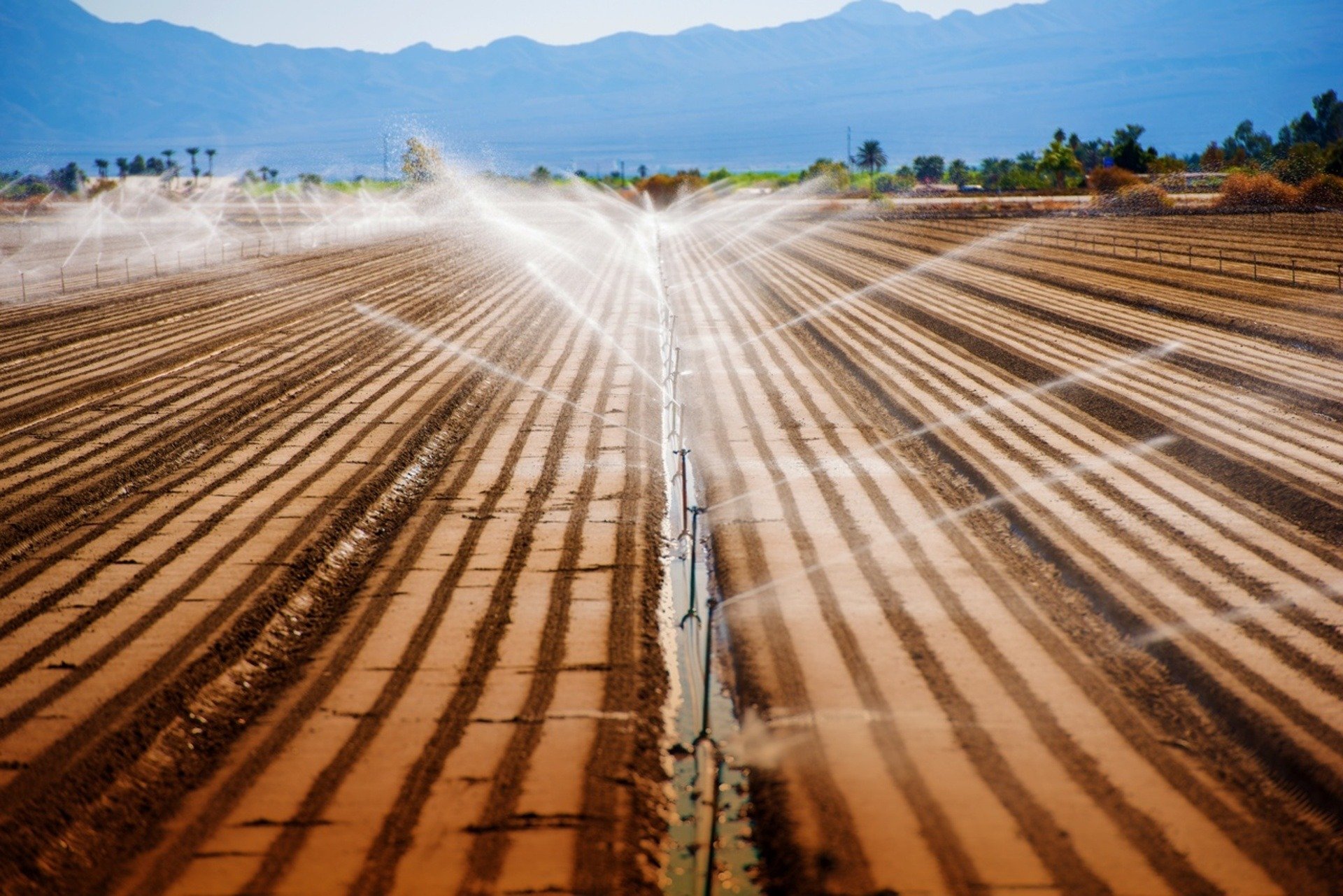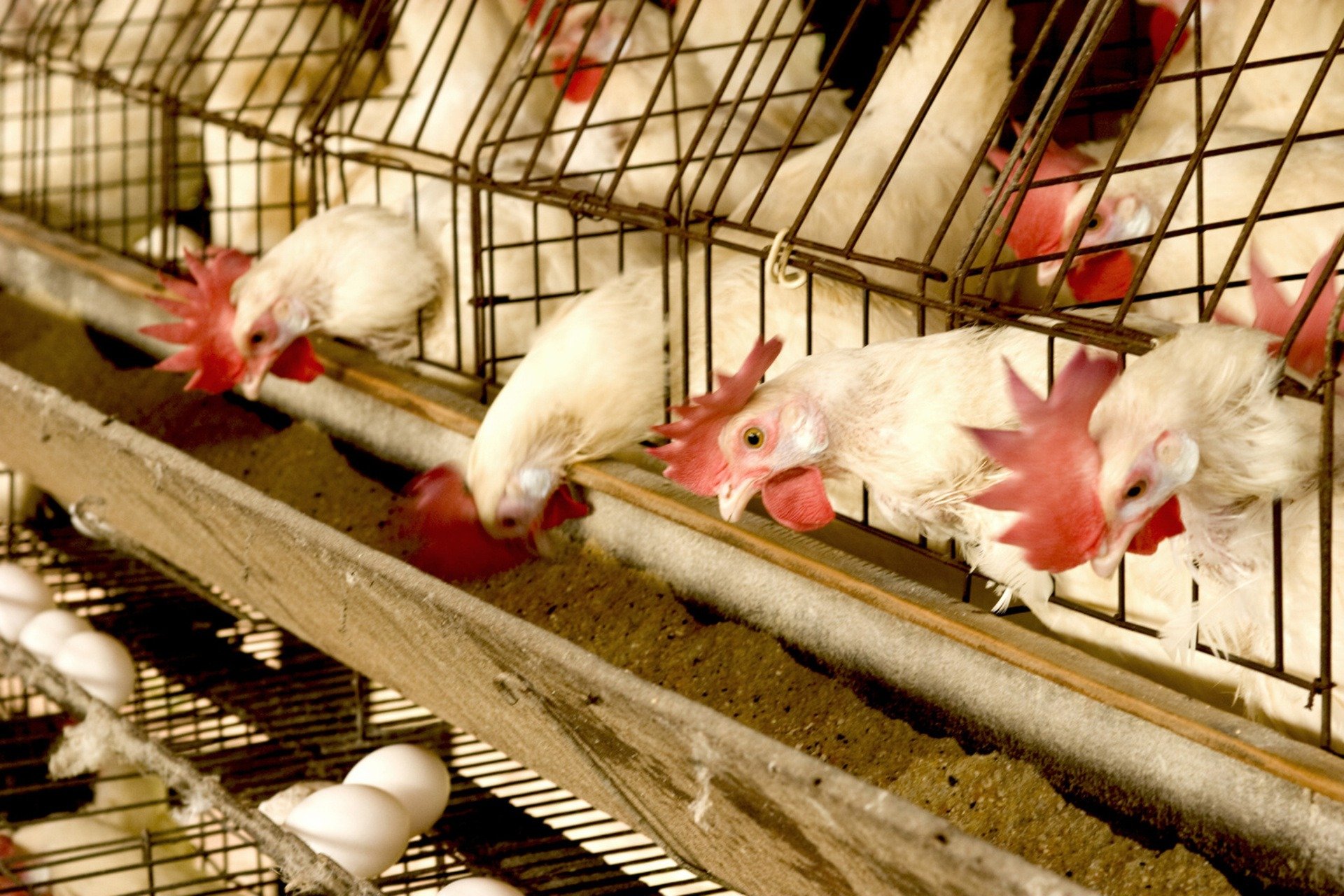Crop Irrigation Has Changed, According to a New Study
Crop irrigation — watering the plants that make our food — is one of the most intensive uses of water in the world. This year, at the United Nations 2023 Water Conference, the biggest water conference in 50 years, water for agriculture topped many countries’ lists of concerns.
Every five years the United States Geological Survey (USGS) calculates our national water use across all water sectors. In 2015 (the most recent year for which data is available), the U.S. withdrew 118,000 Mgal/d for irrigation, which represented 42 percent of all our freshwater withdrawals.
The majority of our irrigation withdrawals go to irrigating agricultural crops (rather than things like front lawns), but Americans don’t directly eat a lot of those crops as food. Instead, most of our irrigated food crops (like corn and soy) are fed in large quantities to livestock (which become our burgers and rotisserie chickens), thereby compounding the amount of water it takes to produce food in this country.
More than half of the withdrawals came from surface water sources (like rivers and lakes) and the remainder came from groundwater (water found underground in aquifers). More than 80 percent of the withdrawals were in the 17 conterminous western states [this map shows the division], illustrating how certain areas of the country use a lot of our water to make our food.
How Much Water do Crops Use?
A new modeling study published in late December, estimated how much water it took to grow 20 different crops that were irrigated with surface water, groundwater and non-renewable groundwater that depleted aquifers — using data from the 3,142 counties across the U.S. that are included in the USGS data. Water use data like these are not typically reported, if they’re even collected at all, yet many areas where crops are grown have struggled with intense drought and water overuse for decades.
The crop list included: produce (e.g., sweet corn, sugar beets, sweet potatoes); grains (e.g., wheat, rye, barley); and animal feed (e.g., corn, soybeans, alfalfa).
The study covered the years 2008 through 2020, and integrated data into a well-known water model using information about the locations of specific crops, crop growing seasons, irrigation locations and efficiencies and crop coefficients for evapotranspiration demands.
Water Irrigation Trends
The study showed some interesting agricultural water use trends.
As noted earlier, we already know that many of the crops that are irrigated are turned into animal feed, and it turns out, they also take the most irrigation water.
What was new and interesting to learn was how much irrigation has shifted from surface water sources to groundwater sources, and how much groundwater depletion — aquifers that have largely been drained — has occurred throughout the country (but primarily in the Southwest and Midwest).
Over time, most crops, apart from those used for animal feed, showed a decreased reliance on surface water irrigation with an overall 20 percent decrease in surface water use. With that came an increasing reliance on groundwater irrigation, resulting in an almost 3 percent increase in aquifer depletion in areas of heavy use in the Southwest and Midwest.
The authors found that the majority of produce crops used less surface water and more groundwater over the study period. The largest changes were found in three crops: rice, with 71 percent decreased surface water withdrawals; sugar beets, with 232 percent increased groundwater withdrawals; and rapeseed, with a whopping 405 percent increase in groundwater withdrawals.
Then there was the animal feed. It turned out to be the largest user of all irrigation water types, requiring enormous volumes at 33 km3 (26,750,000 acre-feet) of surface water and 13 km3 (10,054,000 acre-feet) of groundwater, and causing 10 km3 (8,107,000 acre-feet) of non-renewable groundwater depletion. [An acre-foot is the amount of water it takes to cover one acre to a depth of one foot.]
Water resource management is often based on modeling that uses past data, but since crop-specific water withdrawals are not typically measured or reported, the modeling essentially produced estimates of how much water would likely have been used given all the information available. This is a weakness of the study because the modeled values can’t be checked against actual reported data.
Future water management might require such data collection and reporting from farmers because, as the impacts of climate change on water resources are becoming more prevalent and our water use outpaces our supply, both surface and groundwater sources are becoming less plentiful or reliable. In the future, close and careful management of irrigation water might need to rely more on modeling of actual water use data.
Crop Productivity and Irrigation Moving East
In addition to the crop water use estimates discussed above, the modeling also helped illustrate how crop irrigation is distributed throughout the country.
As seen in the USGS report, irrigation withdrawals were lower in 2015 than in the past, due to the use of more water-efficient irrigation systems. Yet, even though less water was withdrawn, both the number of withdrawals for irrigation and the number of irrigated acres has steadily increased. According to the most recent USDA Census of Agriculture in 2017, 14 percent of farm acres — a record 58 million — were irrigated, whereas in 1992, for example, 49.4 million acres were irrigated.
Irrigation varies by where and which type of crop is grown, and not surprisingly, the drier states — like California and Colorado — generally have more irrigated acreage since farmers can’t rely on rainwater. Interestingly, the 2017 Ag Census showed that irrigation increases have shifted eastward into the Mississippi delta region, the Midwestern corn belt and southeastern states.
Although all states showed an increase in irrigated acreage, several Midwestern and eastern states, including Arkansas, Georgia, Illinois, Indiana, Iowa, Michigan, Missouri, Mississippi and Minnesota showed significant increases in the number of acres that were irrigated. States that usually top that list are the big irrigators like California, Kansas and Texas, but the number of irrigated acres in those states wasn’t as large due to numerous factors including increased efficiency, water shortages that caused farmers to fallow fields and increased competition for water for development, and flows that support recreation and nature.
Eastern land irrigation numbers have steadily increased, from about seven percent of total irrigated land 60 years ago to 29 percent in 2017. This is likely due to precipitation in those states becoming more erratic with the effects of climate change being felt around the country and farmers realizing the increased productivity that comes with crop irrigation.
The shift to eastern state irrigation is problematic because, as we’ve seen consistently around the country, no place is immune to drought. Even a seemingly water-rich place like the American Southeast regularly struggles with severe droughts, and water shortages, and consistent increases in irrigation have consequences for our water future.
At some point, the U.S. must reckon with the fact that we are depleting our water resources at a rapid pace through our agricultural practices. A new report from the Global Commission on the Economics of Water estimates that global freshwater demand will outstrip supply by 40 percent by the end of this decade. Agricultural practices that encourage waste are a large part of that demand.
It’s up to our future leadership to make the tough choices and regulate water – especially groundwater – in ways we’ve never done before. As consumers, we have a lot of power in our ability to influence lawmakers, food companies and growers to center water security in their laws and policies. It’s necessary, because the future of our food is at stake.
Get the latest food news, from FoodPrint.
By subscribing to communications from FoodPrint, you are agreeing to receive emails from us. We promise not to email you too often or sell your information.
Top photo by Kent/Adobe Stock.
More Reading
Whey too much: The hidden costs of the protein boom
May 29, 2025
Beyond honeybees: The benefits of pollinator diversity
May 28, 2025
Big Banana’s bitter labor truths
May 13, 2025
What do faster line speeds in slaughterhouses mean for animals, workers and food safety?
May 8, 2025
When "Made in America" isn't really: Country-of-origin labeling for beef
May 8, 2025
The never-ending seed oil debate
April 29, 2025
RFK Jr. pushes to close a food additive loophole – but is a gutted FDA up to the task?
April 14, 2025
Our latest podcast episode on pistachios: The making of a food trend
April 1, 2025
Americans love olive oil. Why doesn't the U.S. produce more of it?
February 28, 2025
Finding a pet food that aligns with your values
February 11, 2025


